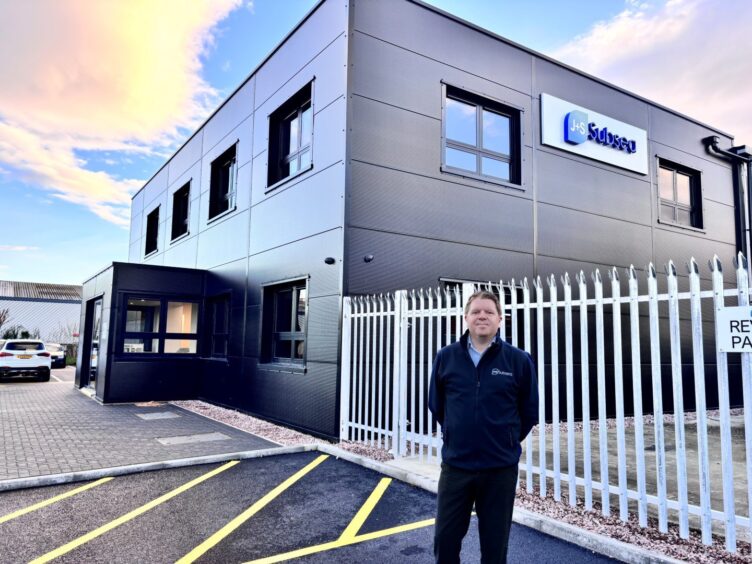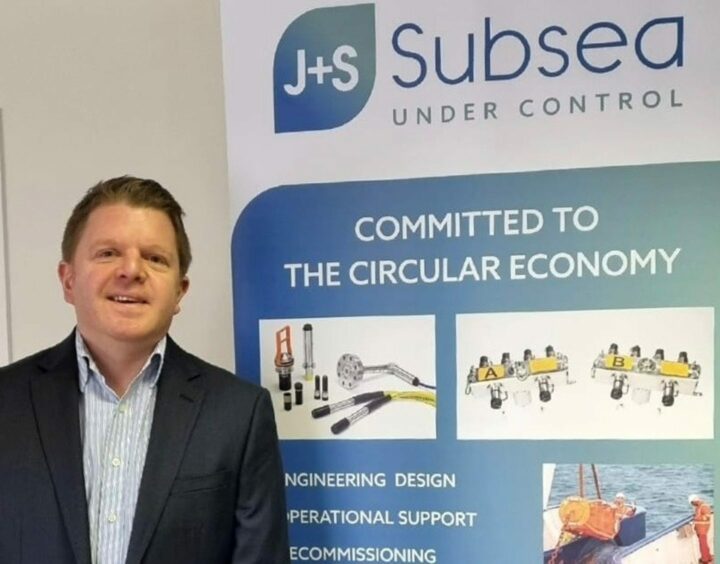
Aberdeenshire’s J+S Subsea has opened the doors of a new facility as it targets growth and looks to become a credible competitor to tier one North Sea suppliers.
The business has upped sticks from its base in Kintore and moved to Holland House in Pitmedden Road, Dyce. The new premises offers increased space as the firm looks to expand its offering and create new jobs.
The bread and butter of J+S Subsea’s business is recycling old infrastructure for North Sea assets to redeploy on operating fields to prolong life or assist with decommissioning.
By doing this, operators can save cash and reduce carbon emissions, the firm’s managing director Phil Reid told Energy Voice.
By deploying equipment from what the firm refers to as its “legacy locker” of used and refurbished subsea trees, control systems and other machinery, clients are able to reduce emissions not to mention speed up work scopes
One client of J+S Subsea faced a nine-month wait for new kit to be delivered and installed but found a better solution in what J&S had to offer.
“We had something similar in the legacy locker, not exactly what they needed but enough of us to get the attention of the client,” said Reid.
“So, they awarded us the scope and 76% of that was reused, only 8% went to waste and there was a 2.3 ton carbon saving versus buying brand new.”
J+S Subsea attract the attention of majors
Recycling is at the heart of what the engineering services firm does, which not only allows it to appeal to operator’s carbon reduction measure but also enables it to compete with the prices of new equipment from bigger firms.
“We are a 100% accountable option now for our clients, but they don’t have to go to the tier ones now,” Reid said.
“What we are seeing is that the clients are using us as leverage sometimes to get what they want out of the tier ones and I’m totally okay with that, there’s no problem because you can’t win them all.
“The fact that we’re four years old and we are here getting recognized by BP, Shell and all these massive players who are using legacy locker equipment shows what we’re doing is working.”
He added that his firm supplies kit to “not only extend the life of a field” but to also help North Sea oil operators decommission “in a cost-effective manner”.
Reid gave an example of a client that was decommissioning its North Sea assets with a “completely broken” control system.
This gave J+S an opportunity to design and manufacture equipment to help them clean and flush subsea trees in readiness for their eventual P&A [plugging and abandonment].
Trees, or ‘Christmas trees’, are the series of valves and spools that regulate the flow of hydrocarbons through pipes on an asset.
He added: “Some fields are really complex so it’s not just a case of switch off. So, they [operators] like to isolate one part to keep the other part going.
“Our engineering and expertise helps them with the engineering of that as well as the manufacturing of equipment to help them to achieve their scheduled decom.”
Decommissioning diligence
Operators are now recognising the role J+S Subsea play and are offering up equipment from their assets ahead of cessation of production (COP).
Reid explained: “We’re not a scrap merchant and what I always do say is one person’s junk, another person’s treasure.
“We won a sustainability award and we’re up for another award for decom support and this is all because of our legacy locker.
“We shout from the rooftops that we are repurposing equipment, we’re recertifying equipment… but where we are sitting in the field right now, and this is where we’re being recognized by the clients, they are coming to us three years in advance of COP and asking what we would like out of their aging infrastructure.”
The firm is not remaining exclusively in oil and gas, as it taps into new sectors such as wind, hydrogen and carbon capture storage. J+S Subsea plans to achieve a turnover of £10 million.
He said that the “business model for legacy locker should be transferable into renewables”.
Reid added: “There’s a lot of obsolete issues with renewables and solar so it’s taking that business model of the legacy locker into the renewable side of things as well.”
Dyce base offers J+S Subsea room to breathe
The new location is opening up new options with increased office and yard space and this couldn’t come at a better time as “growth has been phenomenal” at the Aberdeenshire engineering business.
“We’ve moved here for growth in the oil and gas, in decommissioning, and the renewables sectors,” the firm’s boss explained.
“We’re set up for all growth, not only have we more than doubled the office space, we’ve more than doubled the workshop working areas.
“We’ve got a dedicated larger R&D section, we’ve got a clean hydraulic area that we didn’t have before and we’re away to invest in some pressure test cells as well.”
Reid said that the new pressure test cells will unlock “additional capital for the business.”
The firm was forged in a management buyout from the Aberdeen-based subsea controls engineering division of SEA, a subsidiary of technology group Cohort in 2020.
Since opening its doors at the peak of the COVID-19 pandemic, J+S Subsea has outgrown its current set-up as staff were struggling to find space.
“I had to move out of my office and move into the old conference room because we could get five more desks in there,” Reid said.
“So it was at the point that we were sharing rooms, there was one small conference room between a whole team of people.
“Even the actual facilities weren’t what we needed for the growth and where we need to be in this position for our clients to recognize us as a credible alternative to their current offerings at the tier one companies.”
The firm now employs 39 people but says that the move will expand its headcount as it looks to fill out its new facility.
Recommended for you


 © Supplied by DCT Media/ PA
© Supplied by DCT Media/ PA © Supplied by J+S Subsea
© Supplied by J+S Subsea